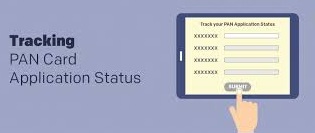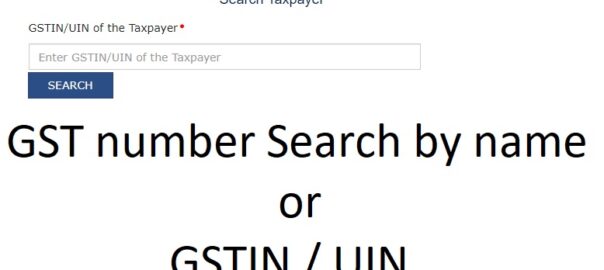Provident Fund
Provident fund is regulated by the Employee Provident Fund scheme, 1952. is one of the primary savings schemes for people working in government, public or private sector organizations in India. Provident fund is a welfare scheme for the benefits of the employees. Under this scheme, both the employee & employer contribute their part but the whole of the amount is deposited by the employer. The Fund shall vest in, and be administered by, the Central Board constituted.
Applicability of Provident Fund
Provident fund registration is mandatory for all establishments-
- Which is a factory engaged in any industry having 20 or more persons, and
- To any other establishment employing 20 or more persons or class of such establishments which the Central Government may, by notification specify in this behalf.
Central Government may apply any establishment employing less than 20 employees after giving not less than two months’ notice for compulsory registration. Even if there are employees less than 20 members the establishment can obtain EPF registration voluntarily. Taxability of Provident fund: Deduction of PF can be claimed under section 80C while calculating Income Tax & when the employee withdraws the amount of PF & Interest after the retirement then, PF amount & Interest amount is not taxable.
| Particulars | Statutory PF | Public PF | Recognized PF | Unrecognized PF | ||||||||
| Employer’s Contribution | Fully Exempt | Not Applicable | Amount in excess of 12% of salary is taxable | Not taxable yearly | ||||||||
| Employee’s Contribution | Eligible for deduction u/s 80C | Eligible for deduction u/s 80C | Eligible for deduction u/s 80C | Not eligible for deduction | ||||||||
| Interest Credited | Fully Exempt | Fully Exempt | Amount in excess of 9.5% p.a., is taxable | Not taxable yearly | ||||||||
| Amount received on retirement, etc. | Fully exempt | Fully exempt | Amount withdrawn from EPF is not taxable, provided employee retires or terminates the job after 5 years of continuous services |
|
Pf can be accumulated withdrawn by the employee if he is unemployed for more than 2 months. 75% PF can be withdrawn after the employment of 1 month & rest 25% PF can be withdrawn after the unemployment of 2 months. It is on the choice of the employee after withdrawn of 75% amount that they should continue with the PF account or want to withdrawal the whole amount.
Types of Provident Fund
There are four types of Provident Fund, which are as follows
- Statutory Provident Fund (SPF)
- Public Provident Fund (PPF)
- Recognized Provident Fund (RPF)
- Unrecognized Provident Fund (URPF)
- Statutory Provident Fund (SPF)
It is a provident fund registered under Provident fund Act, 1925. They are also known as government provident fund. So, the employees who are meant for govt, semi-govt employees, university or educational institutions affiliated to a university established under the statue or other specified institution would be qualified to give to them.
Public Provident Fund (PPF)
PPF is covered under Public Provident fund Act, 1968. Any member of the public whether employed or not can invest in PPF. Minimum Contribution in this fund is Rs. 500 & Maximum amount is 1,50,000 per year. The contributions made to the scheme along with the interests are repayable after 15 years unless extended. The rate of interest, at present, under the scheme is 8% per annum.
Recognized Provident Fund (RPF)
This Scheme is registered under Employee’s Provident Funds and Miscellaneous Provisions Act, 1952. According to the Act, any person who employees 20 or more employees is under an obligation to register himself under this Act. Any person can register himself by their choice weather they had less than 20 employees.
Unrecognized Provident Fund (URPF)
A scheme started by the employer and the employees in an establishment, whether approved by the commissioner of Income Tax is called an unrecognized provident fund.
Provident Fund Contribution Rate:
Contribution of PF paid by employer & employee is 12% (basic pay + dearness allowance + retaining allowance) Equal contribution is paid by the employer & employee. The establishment in which employees less than 20 people shall be restricted to contribute 10% for both employee & employer contribution. It is voluntary for the employees who draw a salary less than 15000 per month to become a member of EPF. The employee who drawn a salary more than 15000 per month at the time of joining is not required to make pf contribution. If they want to become a member of EPF, then they become with the consent of the Employer & Assistant PF Commissioner. The entire 12% of your contribution goes into your EPF account along with 3.67% (out of 12%) from your employer, while the balance 8.33% from your employer’s side is diverted to your EPS (Employee’s Pension Scheme) and the balance goes into your EPF account.
Registration Process:
Registration can be done through www.epfindia.gov.in portal by following below procedure,
- First click on register a new user, then fill the employer details like First name, Surname, PAN, Address, Mobile No., Mail ID then select and enter username and password on your choice, then security question.
- Activation link will be sent to mail and prior to that PIN will be sent to mobile number which should be filled before submitting application.
- Once after successful user creation then register Digital Signature (DSC) then select the employer details and register the DSC using USB token.
Documents required as follows:
To be Submitted by Employer :
- Registration Certificate or Licence issued under Shops and Establishment Acts or Factories Act.
- Address Proof: Latest Rent receipt of the premises you are occupying indicating the capacity in which the premises are occupied, if applicable.
- Latest building Tax/Property Tax receipt (Photocopy).
- Memorandum and Articles of Association/Partnership Deed/Trust Deed depending on the entity that is applying for registration.
- Photocopy of certificate of Commencement of production and/or Registration No. of CST/ST (or GST once it becomes applicable).
- Copy of PAN Card
- Evidence in support of the date of commencement of production/business/first sale (e.g. Copy of First Invoice).
- Month wise employment position, salary, etc.
- Copy of bank statement
To be Submitted by Employees :
- Family Photo




